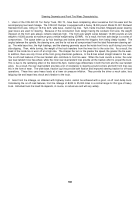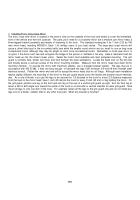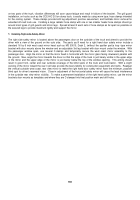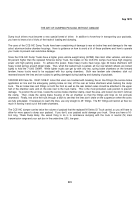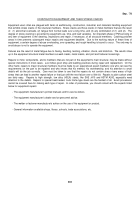TM-5-3805-254-14-P-1 - Page 266 of 590
4.
Don't expend your energy in redesigning your vehicles to fit the larger of the tree stumps, boulders, and other
obstacles in your offroad path.
Instead, test your vehicle -and know how big an obstacle you and your vehicle can go
over,; how to correctly drive over it to avoid any damage and, finally, how to improve your professional driving skill to keep
your truck rolling and producing.
Mother Nature and man design the wide variety of obstacles in the path of you and your
vehicle.
The vehicle designer and manufacturer decided the best ground clearance and the best center-of-gravity height
to prevent tip overs.
Now,, it is only in the hands of you, the driver, to match the vehicle with the correct height range of
obstacles.
If your judgment is.
good, you are a winner, but if your judgment is poor, there goes your vehicle and -there
goes your driver professional rating (i.e., your E-5 stripes).
5.
For example, a user of the CCE-IHC Dump Truck has modified one truck to increase the clearance height of the front
axle tie-rod by, eight inches (203 mm).
This was accomplished by (a) switching the rear spindle arms from right to left and
vice versa, (b) adding one inch (25.4 mm) high front spring spacer blocks between the spring and the axle spring seat
including longer U-bolts, and (c) reorienting the truck's tie-rod on top of the spindle arms to provide the additional eight-
inch (203 mm) clearance.
These changes cause the axle and wheels to remain the same as before, moved the tie-rod
upward about eight inches and moved all other components of the truck upward one inch (25.4 mm), pivoting about the
rear tandem suspension trunnion shaft.
However, the tie-rod is already located above the lowest part of the front axle I-
beam.
The tie-rod is already in a well-protected position in that any obstacle that would bend the tie-rod, as a result of
forward travel, would have to bend the heavy, 18,000 pound capacity front axle prior to any contact with the tie-rod.
A
second reason that such modification could be nonproductive deals with the disturbance of the truck's steering geometry.
The steering geometry of the front axle is mutually tailored for the truck by the axle manufacturer's and truck
manufacturer's design.
The steering gear drag links from the frame mounted gear boxes to the upper spindle arms should
be and are just about parallel with the truck frame.
As a result, the truck's roll and pitch with flexible front suspension has
little effect on truck's usual handling characteristics.
The addition of even the one-inch (25.4 mm) more of drop on the
right and the left drag links will result in increased or dangerous wander of the front steering wheels.
Although the
steering wheel is held straight ahead, the action of the front suspension and the dropped drag links will result in
unpredictable self-steering of the truck.
6.
Some vehicles, such as track-type crawler tractors, rubber tire 4x4 tractors, and the five- and the 20-ton 4x4 Rough
Terrain Cranes, have belly pans that are designed to bottom-out and support the vehicles weight over a single small area.
The weight penalty and the complex maintenance accessibility limit belly pans to the type of construction and earthmoving
equipment where they can be considered to cost less in problems than do the repairs and the hours of downtime.
198
Back to Top

